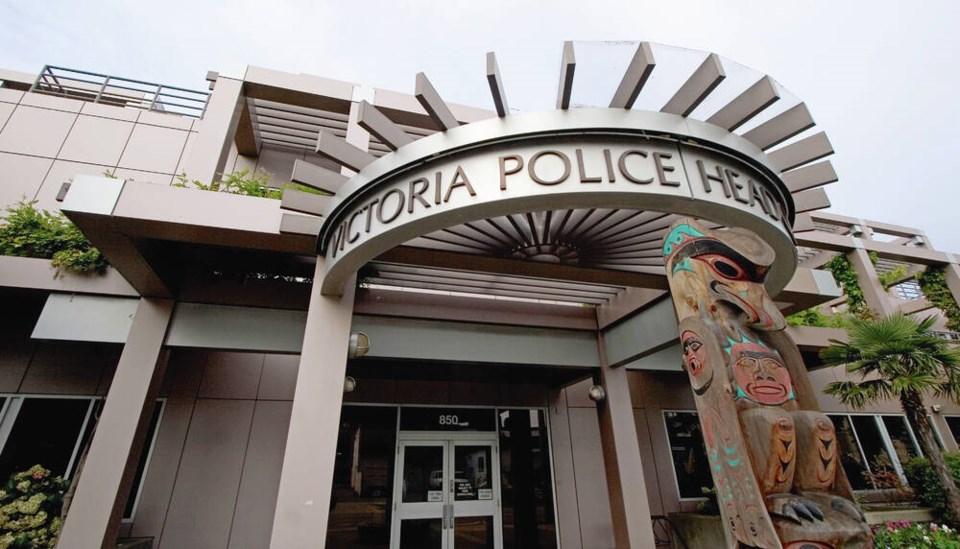The chair of the Victoria and Esquimalt Police Board’s finance committee says this year’s proposed budget won’t solve all the police department’s problems, but it’s needed to meet critical policing goals.
“We’re still going to have issues with wait times for police response, our capacity to deal with crime trends and do proactive policing and be innovative in terms of our crime prevention and also to deal with the impact that limited resources have on our staff, but we’ve done the best we could with what we thought was reasonable,” Elizabeth Cull said at the board’s recent meeting with Victoria council.
The board has requested a $4.6 million or 6.86 per cent budget increase for 2024, which would take the overall police budget to $72.1 million.
That figure could jump to $74.13 million — a 9.8 per cent increase — if the province rules that Victoria and Esquimalt, which split the cost of the VicPD budget each year, are on the hook for several items they refused to pay for in 2023 — including a portion of the maintenance budget and some staff positions and services.
The police board appealed to the province to determine who should pay the shortfall, but the province has yet to determine who is on the hook for it.
Victoria is responsible for 86.33 per cent of the police budget, with Esquimalt picking up the rest of the tab.
For 2024, Victoria’s share of the $72.1 million budget would be $62.27 million.
In making the case for the budget, VicPD Chief Del Manak cited Statistics Canada’s crime severity index that shows the volume and severity of police-reported crime in Victoria last year was 157, well above the provincial average of 100, and that the caseload per officer in Victoria was 49 in 2021, compared with the provincial average of 33.
Manak said the added resources are needed to deal with the heavier workload the department faces due to increased social housing in the core, the inflationary pressure on wages and benefits, the increased complexity and reporting standards officers face, and the need to attract and retain qualified officers to the area.
Manak noted the department has worked to trim its costs, reorganizing its frontline staff so overtime hours returned to normal levels, finding software efficiencies, and developing an online crime-reporting tool to provide better service.
It also plans to try a vehicle lease program that could net a 10 per cent reduction in vehicle costs, Manak said.
The board has said the budget largely maintains the status quo, and the increased costs are reflective of the economic reality.
The biggest cost driver is salaries and benefits, which increase by 3.5 per cent or $2.38 million in the proposed budget.
There are also increased costs for E-Comm, the emergency communications centre responsible for answering 911 calls, as well as for union negotiations and settlements, funding for four new staffing positions and work to ensure the health and wellness of the force.
Victoria council will likely make its decision on the police budget Monday, when it considers the city’s overall operations budget for 2024.
>>> To comment on this article, write a letter to the editor: [email protected]



